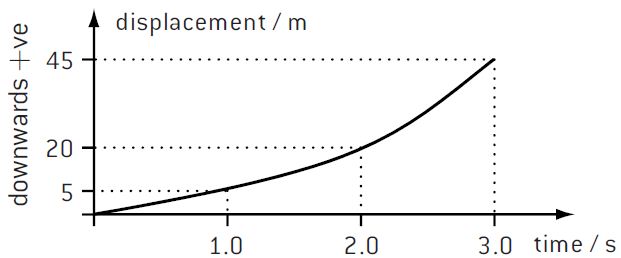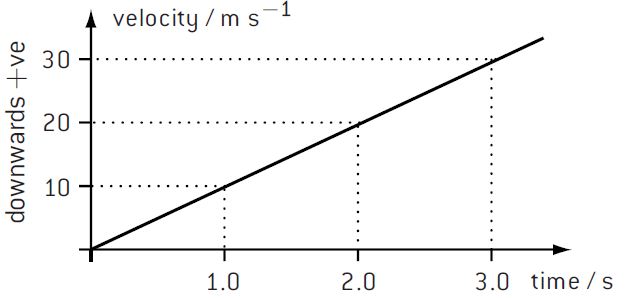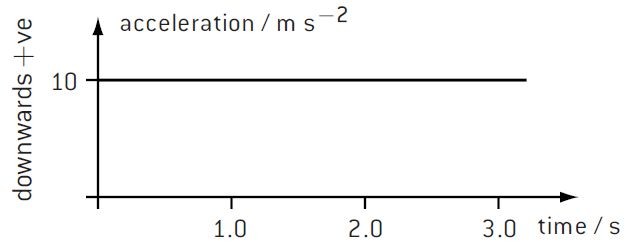Motion graphs of falling objects during free-fall | Motion graphs for freely falling bodies
Last updated on May 14th, 2021 at 10:07 am
Here we will discuss the motion graphs of falling objects during free-fall. During free-fall, the only force that is considered to act on the vertically falling object is Gravity. That means during free-fall the air drag is not considered.
In other words, in those cases where air drag is found to be negligibly small and the only considerable force on the falling body is gravity, there we refer to the vertical falling as freefall.
So while drawing the motion graphs for freely falling bodies we will consider only gravity as the force acting on the body. Hence, the acceleration of the body is the same as the acceleration due to gravity(g).
Motion graphs for free-fall
We will take the downward direction of the motion as positive to draw motion graphs of an object undergoing free-fall. The initial velocity(u) is zero. Let’s find out 3 graphs for free-fall: (1) Displacement-time graph (2) Velocity-time graph (3) Acceleration-time graph. Also Read: FreeFall FAQs
Displacement-time graph for free-fall
Here is the displacement-time graph for a freely falling object.

Here, the motion formula behind this graph is S = (1/2) g t2
Velocity-time graph for free-fall
Here is the velocity-time graph for a freely falling object.

Here, the motion formula behind this graph is v = g t
Acceleration-time graph for free-fall
And, here is the acceleration-time graph for a freely falling object.
Here the free-fall (a vertical motion) of the object happens in a uniform gravitational field. Hence, it’s a uniformly accelerated motion. Acceleration = acceleration due to gravity(g) = 10 m/s2

Summary
So here in this post, we have covered 3 graphs for free-fall: (1) Displacement-time graph (2) Velocity-time graph (3) Acceleration-time graph.
We suggest you go through these graphs for vertical fall against air-drag or air resistance.
Now share this post using the share buttons on this page and bookmark our pages.

